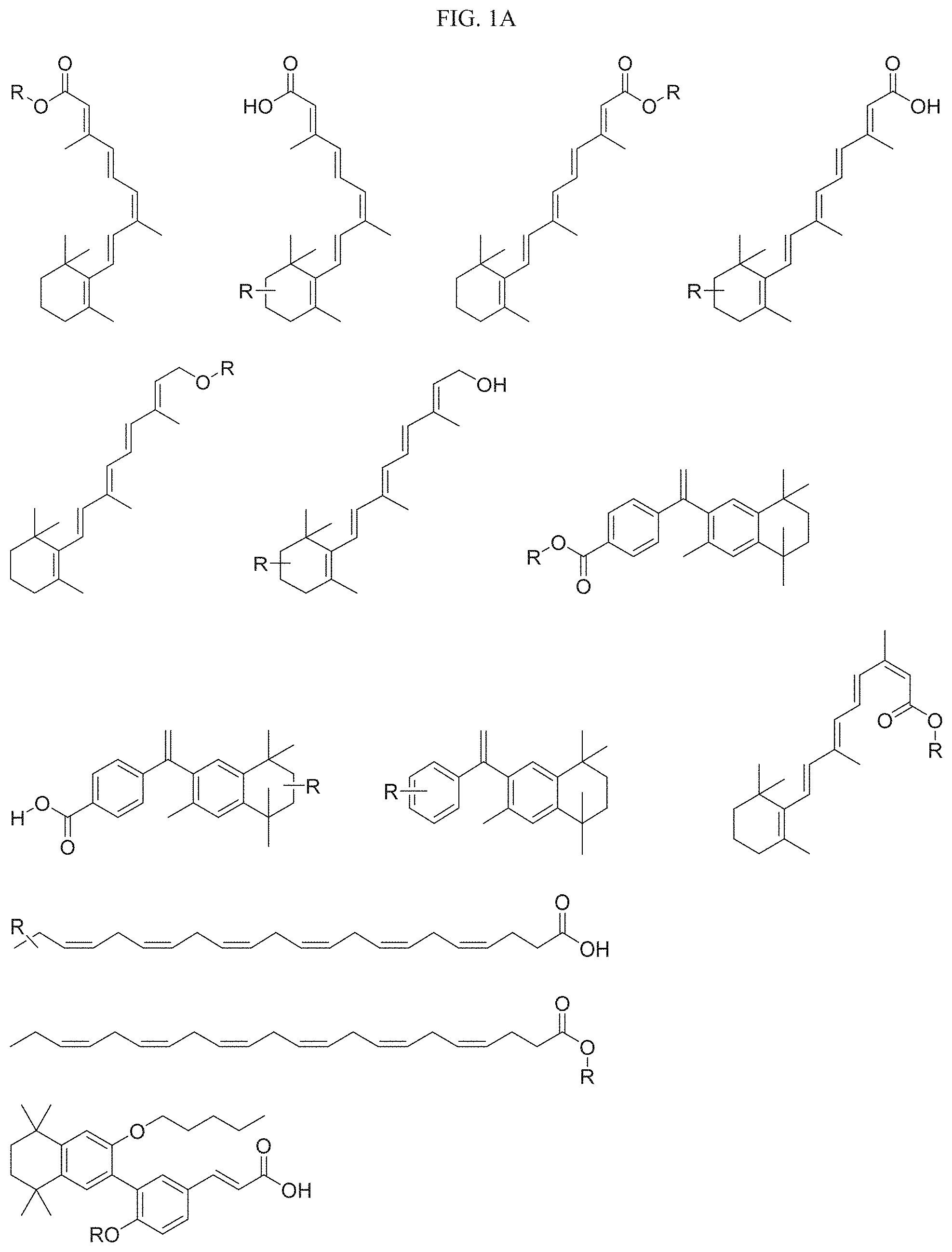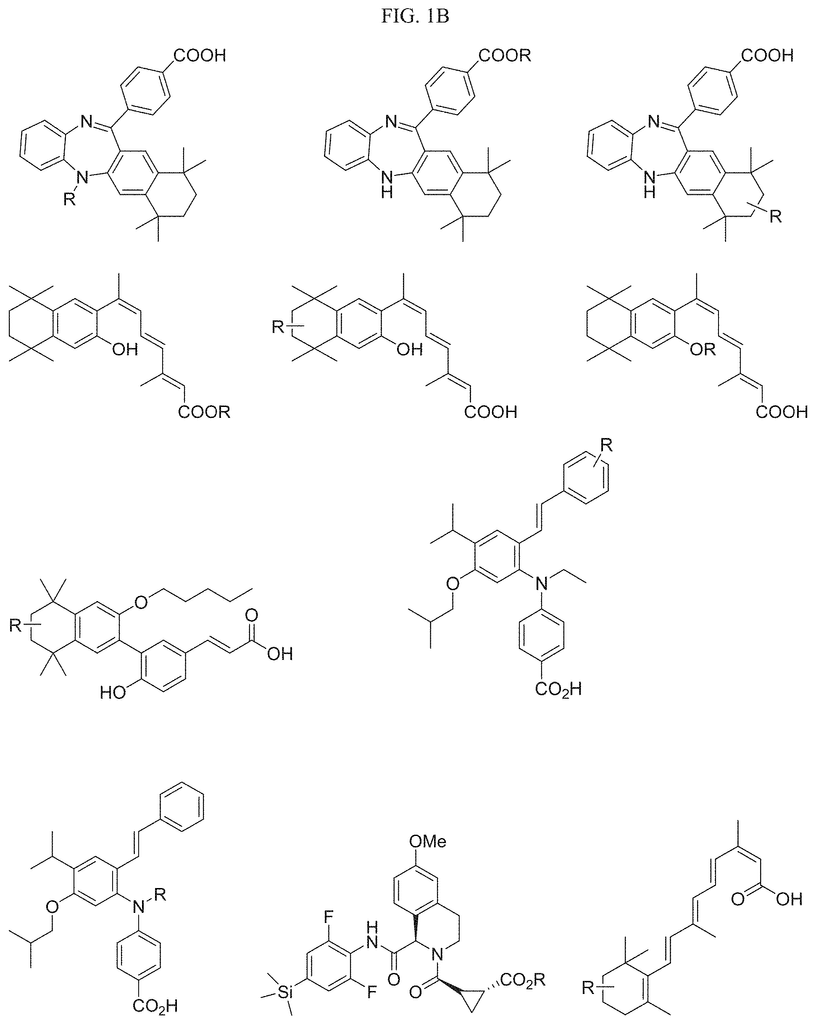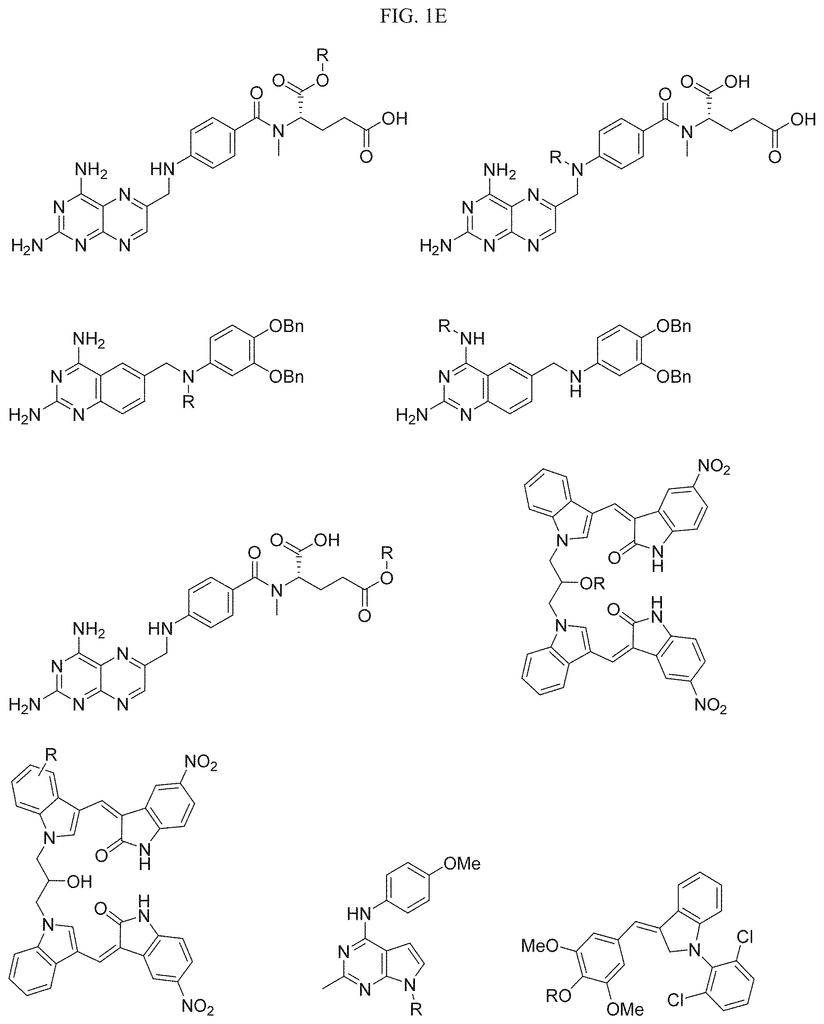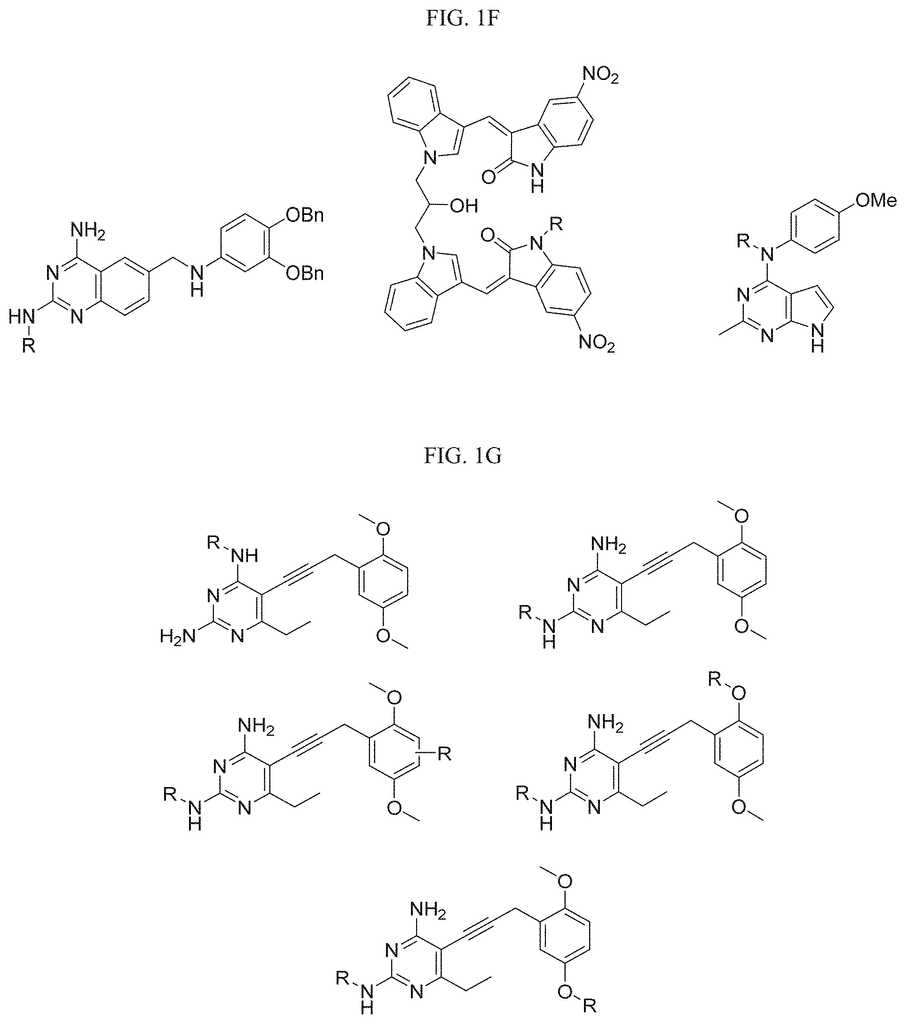Invented by Andrew J. Phillips, Chris G. Nasveschuk, James A. Henderson, Yanke Liang, Minsheng He, Kiel Lazarski, Gesine Kerstin Veits, Harit U. Vora, C4 Therapeutics Inc
The mechanism of action of C3-carbon linked glutarimide degronimers involves the recruitment of E3 ubiquitin ligases to the target protein, leading to the addition of ubiquitin molecules to the protein and its subsequent degradation by the proteasome. This process is highly specific and can be tailored to target specific proteins implicated in disease pathogenesis. Moreover, the use of small molecules for protein degradation offers several advantages over traditional approaches, such as gene silencing or inhibition of protein function, including faster onset of action, reversible effects, and potential for oral administration.
The market for C3-carbon linked glutarimide degronimers is driven by the increasing demand for novel therapeutics that can address unmet medical needs. The pharmaceutical industry is investing heavily in the development of protein degradation technologies, and several companies have already entered the market with their proprietary degronimer platforms. For instance, Arvinas, a biotechnology company based in Connecticut, has developed a platform called PROTAC (PROteolysis TArgeting Chimeras) that uses small molecules to induce the degradation of disease-causing proteins. The company has several programs in preclinical and clinical development, targeting various oncology and neurodegenerative indications.
Another company that has entered the protein degradation market is C4 Therapeutics, which has developed a platform called Degronimid that uses C3-carbon linked glutarimide degronimers to induce protein degradation. The company has several programs in preclinical development, targeting oncology and immunology indications.
The market for C3-carbon linked glutarimide degronimers is expected to grow significantly in the coming years, driven by the increasing number of drug targets that can be addressed by protein degradation technologies. Moreover, the potential for oral administration and the ability to target proteins that are considered “undruggable” by traditional approaches offer significant advantages over existing therapies. However, the development of degronimer-based therapeutics is still in its early stages, and several challenges need to be addressed, including the optimization of pharmacokinetic properties, the identification of suitable E3 ubiquitin ligases, and the potential for off-target effects.
In conclusion, the market for C3-carbon linked glutarimide degronimers for target protein degradation is a rapidly growing field in the pharmaceutical industry. The potential of this approach to address unmet medical needs and the advantages over traditional therapies make it an attractive area for investment and development. However, further research is needed to optimize the technology and address the challenges associated with the development of degronimer-based therapeutics.
The C4 Therapeutics Inc invention works as follows
This invention provides Degronimers with carbon-linked E3 Ubiquitin Ligase Targeting moieties (Degrons), that can be linked to targeting ligands for proteins that have been selected for in vivo degradation. It also includes methods of preparation and use.
Background for C3-carbon linked glutarimide degronimers for target protein degradation
Protein degrading is an essential and highly controlled process that maintains cell homeostasis. Ubiquitin-proteasome pathway is responsible for the selective identification and removal excess, misfolded or damaged proteins. UPP is essential for the regulation of nearly all cellular processes including antigen processing and cell cycle, DNA transcription, repair and differentiation, immune response, inflammation, and cell growth. It also regulates cell surface receptors and secretory pathways, stress response, extracellular modulators and ribosome biogenesis.
Covalent attachment multiple ubiquitin molecules to a terminal Lysine residue by an E3 Ubiquitin Ligase marks the protein for proteasome decay. The protein is then digested into small, peptides and finally into its constituent amino acid that are used as building blocks for other proteins. A variety of clinical disorders have been linked to defective proteasomal degrading, including Alzheimer’s, Parkinson’s, Huntington’s, muscular dystrophies and cardiovascular disease.
There are more than 600 E3 ubiquitin Ligases that facilitate the ubiquitination different proteins in vivo. These can be broken down into four families: U-box E3s (HECT-domain E3s), monomeric RING E3s (monomeric RING E3s) and multi-subunit E3s. Li et. al. (PLOS One 2008, 3, 1487) Titled?Genome-wide annotation of human E3 ubiquitin ligases identifies MULAN as a mitochondrial E3 that regulates signaling and dynamics. ; Berndsen et al. (Nat. Struct. Mol. Biol., 2014 21:301-307). Titled?New insights into the ubiquitin E3 Ligase mechanism? ; Deshaies et al. (Ann. Rev. Biochem., 2009 78, 399-3434) Titled?RING domainE3 ubiquitin-ligases. ; Spratt et al. (Biochem. 2014, 458, 421-437) titled ?RBR E3 ubiquitin ligases: new structures, new insights, new questions.? ; Wang et. al. (Nat. Rev. Rev.
In 1995, Gosink et al. (Proc. Natl. Acad. Sci. USA 1995, 92, 9117-9121) in a publication titled ?Redirecting the Specificity of Ubiquitination by Modifying Ubiquitin-Conjugating Enzymes?, provided proof of concept in vitro that engineered peptides can selectively direct ubiquitination of intracellular proteins. Nawaz et al. (Proc. Natl. Acad. Sci. U.S.A. 1999, 96, 1858-1862) titled ?Proteasome-Dependent Degradation of the Human Estrogen Receptor? describes ER degradation that takes advantage of the ubiquitin?proteasome pathway.
Proteinex, Inc.” filed a February 1999 patent application that was granted as U.S. Pat. No. No. 6,306,663 claims a method for generating a compound to activate the ubiquitination a Target Protein. This involves covalently linking a Target Protein binding component able to bind to the Target Protein through a ubiquitination recognize element. Proteinex stated that the invention could be used to regulate protein levels in eukaryotes. Although the patent ‘663 was based on the original patent application that described the high-level concept of manipulating the UPP system in order to degrade selected proteins, it did not include enough detail to enable skilled persons to construct the proposed compounds. The skilled person was instructed to use standard drug discovery methods and to screen for small molecules that could bind to the Ligase for the ubiquitination detection elements. Proteinex also stressed the importance of using peptides for ubiquitination detection elements. This can cause significant problems in oral drug administration.
Since then the scientific community has been very interested in harnessing the ubiquitin proteasome pathway to therapeutic intervention. Zhou et. Harvard Medical School (Mol. Cell 2000, 6, 751-756 titled “Harnessing the Ubiquitination Machine to Target the Decamination of Specific Cellular Proteins?” A receptor that can direct ubiquitination in yeast and mammalian cells was described.
Craig Crews (Yale University), and his coworkers confirmed the work of Proteinex. They found that a molecule capable of binding to a Target Protein and a Ubiquitin Ligase can cause the Target Protein’s degradation. U.S. Pat. was their first description of such compounds. No. Deshaies et al. filed 7,041,298 in September 2000. Deshaies et al. granted the patent in May 2006 under the title?Proteolysis targeting Chimeric Pharmaceutical?. This patent described a ‘PROTAC?. It consists of a small molecule binder of MAPAP-2 and a peptide that can bind the F-box protein??TRCP. Sakamoto et. al. also present information in the ‘298 Patent. (Proc. Natl. Acad. Sci. USA 2001, 98. 8554-8559). Titled?Protacs? Chimeric Molecules that Target Proteins to Skp1-CullinF Box Complex for Ubiquitination or Degradation?. Sakamoto et. (Mol. Cell. Proteomics 2003. 2, 1350-1358. Titled “Development Of Protacs To Target Cancer-Promoting Proteins For Ubiquitination And Degradation?” PROTAC2 is an analogous PROTAC that, instead of degrading MAPAP-2, degrades estrogen receptors.
MDM2, which ubiquitinates p53, was the first E3 ligase to be successfully targeted using a small molecule. Vassilev and colleagues identified the targeting ligand as an HDM2/MDM2 inhibitor. Science 2004, 303-844-848, titled “In Vivo Activation Of The P53 Pathway By Small-Molecule Antiagonists of MDM2?
Schneekloth and colleagues (2004) described other examples of small molecules-induced recruitment to Target Proteins to be degraded by the proteasome on cultured cells. (J. Am. Chem. Soc. 2004 126, 3748-3754). Titled?Chemical Gene Control of Protein Levels? Selective In Vivo Targeted Decay? Schneekloth et al. Schneekloth et al. describe a PROTAC3 degradation agent that targets FK506 binding proteins (FKBP12). They also show that PROTAC2 (and PROTAC3) hit their respective targets using green fluorescent protein (GFP). Schneekloth et al. The article titled “Chemical Approaches for Controlling Intracellular Protein Decay” was published in Chem Bio Chem 2005, 6, 40-46 The field was at that time.
The publication by Schneekloth et al. (Bioorg. Med. Chem. Lett. Lett. (2008), 18, 5904-5908). Titled “Targeted intracellular protein degradation inducible by a small molecule: En route to chemical proteomics?” describes a small compound that is linked by PEG and that in vivo destroys the androgen receptor. It also binds to the ubiquitin E3 and the androgen receptor simultaneously.
Crews et al. filed “WO 2013/170147.” The title of this article is?Compounds useful for promoting protein degradation and methods of using them? The compound described contains a protein degrading moiety that is covalently bound with a linker. Its ClogP must be equal or greater than 1.5. The specification identifies proteins degrading compounds that contain small molecules that are capable of binding to an E3 Ubiquitin Ligase.
In parallel, unrelated research, scientists investigated thalidomide toxicology. Ito et al. Ito et al. Cereblon is part of an E3 ubiquitin ligase proteins complex that interacts with damaged DNA binding Protein 1. This forms an E3 ubiquitin ligase compound with Cullin 4, and the E2-binding Protein ROC1 (also called RBX1), where it acts as a substrate receptor for selecting proteins for ubiquitination. It was discovered that thalidomide and cereblon binding in vivo could be responsible for thalidomide’s teratogenicity. The discovery of thalidomide teratogenicity was made in the mid-1960s. However, the compound and its related structures were found to be effective as anti-inflammatory and anti-angiogenic agents (see Bartlett and al. (Nat. Rev. Rev.
The discovery that thalidomide binds with the cereblon E3 Ubiquitin Ligase led researchers to explore the possibility of incorporating thalidomide or certain derivatives into compounds for targeted destruction proteins. In 2014, Science published two seminal papers: G. Lu and colleagues, The Myeloma Drug Lenalidomide Promotes Cereblon Dependant Destruction of Ikaros Proteins Science, 343,305-309 (2014) and J. Kronke and colleagues, Lenalidomide Causes Selective Decay of IKZF1 & IKZF3 within Multiple Myeloma cells Science, 343, 301-305 (2014)
U.S. 2014/0356322 was assigned to Yale University and GlaxoSmithKline. The title of the paper is?Compounds, Methods for the Enhanced Decay of Target Proteins & other Polypeptides by an Ubiquitin Ligase? describes protein degrading substances that bind to VHL E3 Ubiquitin Ligase. Buckley et. al. (J. Am. Chem. Soc. 2012, 134 (4465-4468), titled “Targeting Von Hippel-Lindau’s E3 Ubiquitin Ligase by Small Molecules to Disrupt Vhl/Hif-1alpha Interaction?
Additional publications are available in this area include Lu et. al. (Chem. Biol. 2015, 22, 755-763). Titled?Hijacking E3 Ubiquitin Ligase Cereblon in Efficiently Target Brd4′ ; Bondeson et al. (Nat. Chem. Biol. 2015, 11:611-617). Titled?Catalytic In Vivo Protein Knockdown By Small-Molecule Protacs’ ; Gustafson et al. (Angewandte Chemie, International Edition in English 2015, 54, 9659-9662) titled ?Small-Molecule-Mediated Degradation of the Androgen Receptor through Hydrophobic Tagging? ; Lai et al. (Angewandte Chemie International Edition in English 2016, 55, 807-810). Titled?Modular Protac Designs for the Degradation Of Oncogenic Bcr?Abl? ; Toure et al. (Angew. Chem. Int. Ed. 2016. 55, 1966-1973). Titled?Small Molecule Protacs – New Approaches for Protein Degradation? ; and Winter et al. (Science 2015 348, 1376-13811) Titled?Drug development. Phthalimide Conjugation: A Strategy for In Vivo Target Protein Decay? describes the thalidomide-based Target Protein Degradation technology.
Arvinas Inc. was assigned “WO 2015/160845” titled “Imide Based Modulators for Proteolysis? and Associated Methods Of Use? describes protein degradation compounds that contain thalidomide or certain derivatives that bind to cereblon E3 Ligase. Arvinas Inc. has filed additional patent applications relating to the degrading of Target Proteins using known E3 Ligase ligands. U.S. 2016/0045607, titled “Estrogen-related REceptor Alpha Based PROTAC Compounds” and Associated Methods. U.S. 2016/0045607 titled “Estrogen-related Receptor Alpha Based PROTAC Compounds and Associated Methods of Use?”. U.S. 2016/0214972 titled “Compounds and Methods to the Targeted Degradation Of Androgen Receptors?” U.S. 2017/0008904 is titled “MDM2-Based Modulators for Proteolysis” and Associated Methods. U.S. 2017/0037004 was titled “Alanine-Based Modules of Proteolysis and Related Methods of Use?” U.S. 2017/0037004 titled “Alanine-Based Modulators of Proteolysis and Associated Methods of Use?”. WO 2016/036036 is titled “Tank Binding Kinase-1 PROTACS” and Associated Methods. WO 2016/197032 is titled?Imide Based Modulators and Propeolysis and the Associated Methods?
Dana-Farber Cancer Institute also filed patent applications relating to the degradation of Target Proteins using known E3 Ligase ligands that direct Target Proteins to the proteasome. The filings include US 2016/0176916, titled “Methods To Induce Target Protein Decay through Bifunctional Molecules” and WO 2017/024318, titled “Target Protein Destruction to Attenuate Adoptive Cell Therapy Associated Adverse Illness Responses?” WO 2017/024317 is titled “Methods To Induce Target Protein Decay Through Bifunctional Molecules?” WO 2017/024317 titled “Methods to Induce Target Protein Degradation through Bifunctional Molecules?”.
While there have been some advances in modulating the UPP in in vivo protein degradation, it would be beneficial to have more compounds and methods to harness the UPP in therapeutic treatments.
It is the object of the present invention that new compounds, methods and compositions be made that can be used to degrade selected proteins in vivo.
Compounds, their uses and manufacturing are described that can cause the degradation of selected proteins via the ubiquitin proteasome pathway. (UPP). It has been surprisingly discovered that C3-carbon substituted-glutarimides and analogues thereof described herein (Degrons) bind an E3 ligase (typically the cereblon protein). Formulas I, IL and V contain a?Targeting Ligand. Degronimers of Formulas VI, VI, and V are described. It binds (typically not-covalently), to a targeted Target Protein, a Degron? This binds (typically not-covalently), to an E3 Ligase (typically via cereblon), and optionally to a Linker, which covalently links to the Targeting Ligand to Degron.
A Degronimer, its pharmaceutically acceptable salt or/and its pharmaceutically accepted composition can be used for treating a disorder that is mediated through the Target Protein that binds with the Targeting Ligand. In some embodiments, a treatment method for a host suffering from a Target Protein-mediated disorder is provided. This includes administering a dose of the Degronimer, or its pharmaceutically acceptable sodium, to the host (typically a human) in a pharmaceutically acceptable formulation.
Click here to view the patent on Google Patents.





